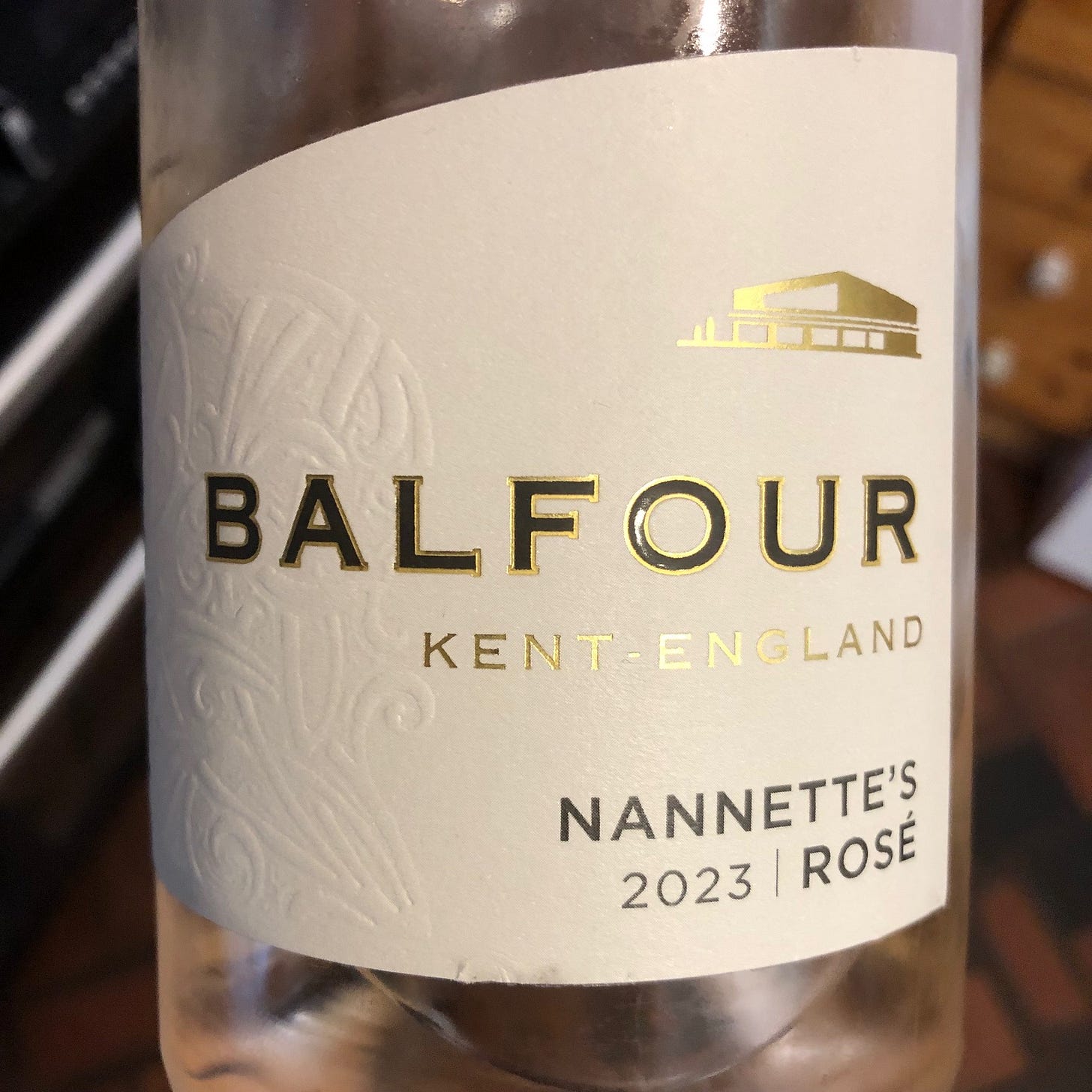Is English rosé piss?
English Wine Week starts tomorrow, Saturday 15 June, so I’m tackling one of the big issues in a serious way - with some recommendations at the end for paid subscribers.
Before we start, just to let you know that my event at Backstory in Balham on Wednesday 10 July at 7:30pm is now confirmed. I’ll be talking about my book, Vines in a Cold Climate with some English wine to try. It would be great to see some readers there.
You probably know Tom Gilbey from his stunt tasting a wine blind every mile while running marathon and correctly identifying it. Quite a feat. I couldn’t do either separately. What was quite funny was the sheer number of people who had a sense of humour failure over the whole thing - pointing out on social media how dangerous/ irresponsible the whole thing was. Anyway, that’s the internet.
There was more controversy recently when in one of his Instagram tasting videos he pronounced English rosé ‘absolute piss’ but made an exception for a new upmarket wine from The Heretics (see below). Is this true? Is all English rosé piss?
Well, to be honest, a lot of it did used to be awful and some of it still is. But then again a lot of rosé from more traditional wine making countries isn’t very good. It’s an afterthought, sold on its perky colour rather than flavour. A winemaker working in France once joked to me that a poor vintage was known as an AC/DC year ie. a Whole Lotta Rosé.
And while a cheap Southern French rosé is at least going to be made from grenache, cinsault etc, in England getting the all-important colour isn’t quite so straightforward. English pinks are often made from the usual Germanic varieties like bacchus or siegerrebe with the colour coming from the dreaded rondo - a hybrid grape that tastes of Vimto. To disguise the lack of ripeness, these wines might also be off-dry. Not ideal for serving on your yacht.
England really should be rosé heaven because there’s an awful lot of pinot noir and pinot meunier planted to make sparkling wine. It’s very hard to get the skins ripe enough to make a proper red but to get just enough colour for a rosé, these grapes are perfect. Until recently, nobody was doing it well. Now they are.
Simpsons in Kent were early out of the gates here. I remember enjoying an ethereal pale 2018 pink from them. The first English rosé I really loved, however, was a 2020 Mill Hill vineyard from Gusbourne. It was quite dark in colour, darker than Provence, if not quite at Tavel colour, and just packed with ripe cherry fruit and a refreshing slatey edge like a Loire cab franc. A superb wine and completely distinctive. I thought this is what England should be doing, a wine poised between a red and a pink.
It’s pale that sells, however. The next vintage from Gusbourne was a much lighter colour and packaged in an elegant clear glass bottle. The wine is still good though I can’t stop hankering for that first dark wine.
Nowadays most of the best English wines are fashionably pale though there are a few mavericks like Lyme Bay and Gutter & Stars making more full-bodied wines. These wines are not cheap, good English wine never is. Remember that the grapes used in most pinks could be used to make sparkling wines that sell for £30-40 a bottle. But as the success of the big Provence brands like Whispering Angel and Miraval show, people are prepared to spend £20 on rosé as long as the quality is there and the packaging is right (my latest Critic column is on super posh pinks).
And most of the time, I’d prefer a good English pinot noir pink to another identical tasting wine in a fancy bottle from France. Pinot noir rosé should become an English speciality, like Sancerre in the Loire or Marsannay in Burgundy. The only thing holding it back is a shortage of grapes - those dark grapes are heavily in demand for making sparkling wine - though with all the plantings going in the ground that should be less of a problem in a couple of years. The wines below are definitely not piss. I’d just like to see a few more with a bit of colour.
Keep reading with a 7-day free trial
Subscribe to Drinking Culture to keep reading this post and get 7 days of free access to the full post archives.




